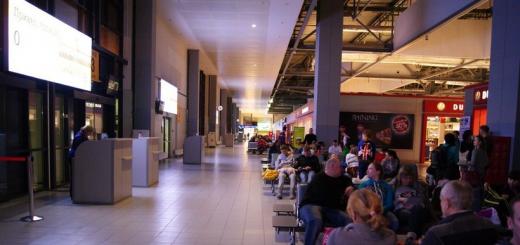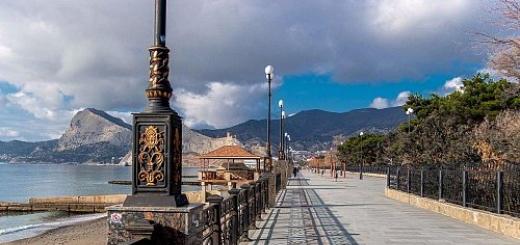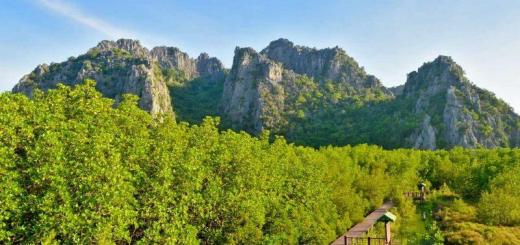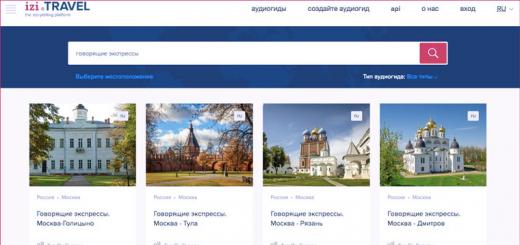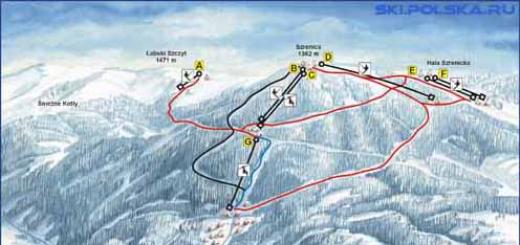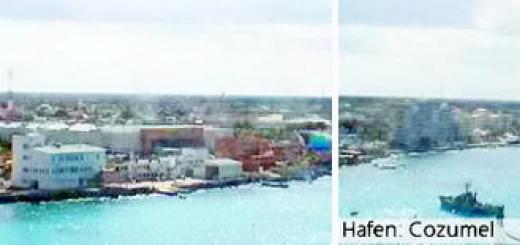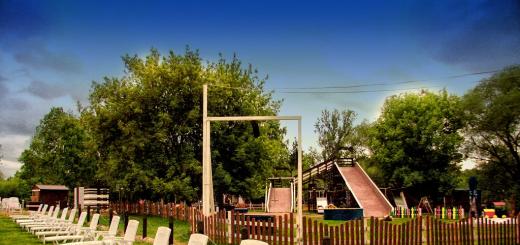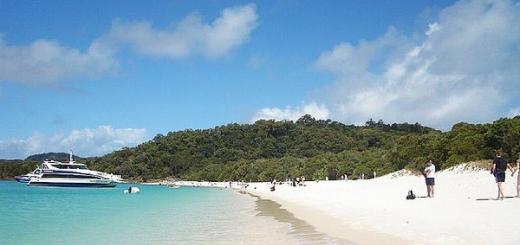The high-rise business center under construction in St. Petersburg is often called the Gazprom Tower. This building will be the highest in the Northern capital and the second largest in Europe after the Ostankino Tower. The skyscraper is being built by Gazprom and it will house the headquarters of this concern and its company.
Recall that initially the construction of a business center with a height of 400 meters was planned to be carried out on a site of 4.7 hectares, in the center of the Northern capital, which caused a sharp protest from city defenders and the public. The object fell into the protected zone, where the monuments included in the list of UNESCO sites are located.
Soon, the governor of St. Petersburg, Valentina Matvienko, canceled the decree allowing the developer to deviate from the altitude of 100 meters allowed in this place.
The new site of 14 hectares for the construction of the Lakhta Tower is located in the north of St. Petersburg at the exit from the city between the Gulf of Finland and the Primorskoye Highway. The distance from the construction site to the city center is about 10 km. According to experts, now the Lakhta Tower, although it will be visible from almost all areas of the city, but it will not block the sights of St. Petersburg and dominate historical sites.
At the same time, the tower will be perfectly visible from the sea; it will become a kind of beacon that welcomes those who come to the city by sea. It will be a landmark object of the sea facade of the Northern Capital.
Unlike the old project, in addition to the office part, the Lakhta Center will house social infrastructure facilities.
The office part will occupy premises in the tower itself, and the buildings at its base will be used for social facilities - shops, sports and medical centers, a children's educational center and a planetarium.
At the top of the tower will be an observation deck, a revolving restaurant and a conference room.
Lakhta Center Tower - brief description
The customer and investor of the project is Gazprom Neft, the construction project was completed by the British architectural bureau RMJM - Robert Matthew Johnson Marshal.
The general contractor is the Turkish company Renaissance Construction (established in St. Petersburg in the 1990s, founded by Turkish businessmen). Dozens of institutes and construction organizations are involved in the construction of the building.
The height of the building with the spire will be 462 meters, and the total weight of the tower with all infrastructure, glazing, and even furniture and people will be 670,000 tons.
The area of one office floor is from 668 to 2060 sq. meters.
From the side of the Gulf of Finland, the Lakhta Center tower will appear in all its splendor in the form of a spire soaring upwards. It can also be compared to a drop of water flying upwards.
Peter the Great conceived Petersburg as the sea capital of Russia. And according to the idea of the authors of the project, from afar, from the sea, the Lakhta Center will look like a snow-white yacht.
The project provides for several architectural highlights, the main of which are a modern planetarium and an open amphitheater.
Planetarium
The planetarium, designed for 140 people, will occupy an unusual place - at the height of the fifth floor of one of the buildings adjacent to the tower. It will look like a huge ball, which seemed to be thrown into the building with all its might, and it stuck to the facade. Of course, such a spectacular form of the building cannot but interest everyone who passes or drives by.
During the sessions, a variety of special effects will be used - a moving floor and illusions of lightning and rain, virtual smoke and smells.
Amphitheater
The idea of creating an open amphitheater facing the sea is connected with the need for a smooth transition from a high roof to a body of water. Here, viewers will be able to admire water fountains and various shows on the water, as well as participate in theatrical performances and competitions.
- When laying the foundation, many principles were taken from nature. So, the piles at the base of the building, like the roots of a giant tree, go into the ground by 82 meters. Above the piles, a “box-shaped” foundation 17 meters high was built, which guarantees the stability of the building
- The maximum allowable deviation of the structure from the vertical along the entire height is no more than 6 millimeters. Not to be confused with the amplitude of a building's vibration during a storm.
- Double-glazed windows have passed a variety of tests: under high water pressure, air currents and fire. The glasses are made using a special film that will not allow the glass to break into fragments.
- All materials used in construction are non-combustible or fire retardant. But despite this, the evacuation of people is thought out as much as possible. In the event of a fire alarm, air is forced into the central core, made of reinforced concrete, which prevents it from smoking. Going to the central core, where there are stairs, a person is safe
- To wash windows, a special system will be used that moves along rails arranged on the ribs of the tower.
- In strong winds, the top of the building can deviate by 46 cm from the vertical, and at the level of the observation deck (at a height of 357 meters), the maximum deviation will be 27 cm
- To prevent birds from crashing into windows, double-glazed windows are edged with opaque material, and the glass itself is non-mirror. In addition, during mass flights of flocks, the backlight will be “frightening”. This way the birds will see the glass.
Surrounding area
From the east side of the building there will be an entrance for the office staff. This part of the complex will appear as an arch with a span of 100 meters.
A pedestrian zone 8 km long will start from the southeast side. It will include a bridge and a huge space for public celebrations and festive events.
The northern part of the territory will be used for various exhibitions, and in addition, in the future, a railway platform and a metro station will be built here.
In addition, next to the tower there will be a parking lot for tourist buses and a museum of the Poltava ship.
Transport infrastructure
In the future, it is planned to organize a transfer between the Lakhta Center and the Chernaya Rechka and Staraya Derevnya metro stations. In 2025, it is planned to build a metro station.
The development of transport infrastructure is promoted primarily by the World Cup. In 2018, the Begovaya metro station will be opened, one of the exits of which is located at a distance of just over a kilometer from the Lakhta Center, that is, within walking distance.
The Lakhta Center Tower will become the center of a new business district of St. Petersburg, one might say Petersburg City, and the development of transport infrastructure will turn this undeveloped area of the Northern capital into a model of a modern and high-quality urban environment. Please note that the project is expected to be completed in 2018.
Architect Philip Nikandrov tells how Gazprom's Okhta Center in St. Petersburg turned into Lakhta Center and explains why an architect should be more important than developers and officials

Philip Nikandrov, chief architect of Gorproekt /Evgeny Egorov / Vedomosti
Philip Nikandrov designed skyscrapers for St. Petersburg and Moscow that have every chance of becoming new city symbols - the Lakhta Center tower on the shore of the Gulf of Finland and the Evolution tower in Moscow City. The architect worked for 15 years in the international bureau RMJM, in offices in the UK and in the Middle East, from where he returned to Russia in 2004. He began designing skyscrapers in the 2000s while working in Dubai. At home, he led the design of two skyscrapers according to his concepts that won international architectural competitions - the Evolution Tower in Moscow City in 2005 and the Gazprom complex in St. Petersburg in 2006.
The Lakhta Center tower in St. Petersburg, where Gazprom structures will move, will be put into operation in autumn 2018. It will become the tallest building in Europe (462 m).
- The construction of the Lakhta Center is being completed. But at one time, the decision to build a tower for Gazprom in St. Petersburg caused a scandal. Tell us about the history of the project and why did you move from Okhta to Lakhta?
- This story began on a plot of about 5 hectares in the place where the Okhta flows into the Neva. On the site of the demolished in 2008 Petrozavod was once the Okhta shipyard, in the XVI-XVII centuries. here was the Swedish fortress Nienschanz, and before that, back in the 13th century, the Swedish fortress Landskrona. In fact, the history of St. Petersburg began with the fact that in 1703 Peter I took Nienschanz by siege, and three weeks later he founded a new city downstream of the Neva, starting to build a fortress on Hare Island. The old earthen fortification of Nyenschantz was subsequently destroyed. When in 2006 " Gazprom” announced a closed international competition for the construction of headquarters on this site, I collaborated with the British company RMJM, which was shortlisted from a solid list of Pritzker laureates. We were able to present an interesting concept that was liked by the customers and the majority of the jury members, while winning both the open Internet voting and the voting at the exhibition of competitive projects.
The concept not only embodied the historical genetic code of the site in its forms - we proposed the museumification of Nienschanz and Landskrona by tracing its outlines in the paving and in the numerous atrium spaces of the complex, which also provided for an archaeological museum for artifacts found during the excavations carried out at the expense of Gazprom. True, the archaeologists, having received their reward, declared the entire site “Petersburg Troy” and demanded a ban on construction, while having no scientific plans to conserve the site or recreate an earthen fortress, except, of course, a pure remake - to build a hidden in the 17th century. fortification from scratch again, and then declare it a monument. Having been approved by the Glavgosexpertiza in 2010, the project was closed, and the authorities of St. Petersburg immediately declared the entire site a monument and banned any construction on it.
But the Okhta project was closed mainly not even in connection with UNESCO’s protests about the very fact of high-rise construction in the so-called buffer zone near the historical center, but because of the revealed illegitimacy of the city’s high-rise regulations, when gross violations were discovered when it was adopted as part of the PZZ [ rules of land use and development] of St. Petersburg. In 2010, the Supreme Court overturned it. At that time, about 120 projects were actually suspended, located in the territories of the industrial belt around the historical center, which UNESCO considered a buffer zone (there is still no such status in determining the boundaries of the historical center of St. Petersburg as a world heritage site). But this whole story developed against the background of the emerging pre-election political protest, in which the construction of a tower for opposition movements in St. cultural space of the city” (they came up with such a thing!). Built in the 1960s. The 300-meter TV tower against the backdrop of the spire of Peter and Paul and three dozen smoky industrial chimneys, exceeding the mark of the top of the dome of Isaac, no one seemed to notice. That is, all this was not so much about architecture as about politics, this landmark project “smelled of power” too strongly.
Philip Nikandrov
Chief architect of "Gorproekt"
Born in 1968 in Leningrad. Graduated from the Faculty of Architecture of the Leningrad Civil Engineering Institute. In 1994 he joined the Union of Architects of Russia
Works at Lengiprogor: Workshop No. 3, participation in projects for Severodvinsk
Moved to the Personal Creative Architectural Workshop (PTAM) of Yu. K. Mityurev
He became the chief architect in the offices of the UK, Middle East and Russia of the international architectural company RMJM Scotland Ltd. (since 2011 - director and co-director of the European studio RMJM). In 1999 he received a professional license to carry out independent architectural activities
Appointed Chief Architect of CJSC "Gorproekt"
Initially, the idea was not accepted with hostility, in 2006 an architectural competition was held, there was an open exhibition of all concepts, there was controversy, but already in 2007 serious money flowed into a protest campaign to discredit the project on Okhta. I don’t know for sure who financed this, but it was about the move from the capital of the country’s largest taxpayer, the amount of tax deductions from which was comparable to the total annual budget of St. one region to another.
- You yourself did not perceive that project as a threat to the historical image of St. Petersburg?
- Not. I would certainly be embarrassed if it was built, say, opposite Palace Square or the Peter and Paul Fortress, similar to the 300-meter London tower The Shard, standing across the Thames directly opposite the Tower, a UNESCO World Heritage Site. Our site was far beyond the historical urban ensembles. We then built a 3D model of the city, carried out our landscape-visual analysis, looking at all the points from which streets the tower would be visible, and found only 5–6 streets, on the axis of which a new dominant sat, and all these streets were outside the so-called golden triangle. Five kilometers from Palace Square is quite a decent distance.
But in the end, Gazprom made a strategically correct decision - to move the construction site from the disputed territory and away from the historical center. Since 2011, the project has been developing in Lakhta, on the coast of the Gulf of Finland, on a site of an alluvial area, 5 km from the border of the historical center. RMJM could not survive the international economic crisis and the work with it did not go further than the concept. So, along with the Lakhta Center project, I moved to work as the chief architect at Gorproekt, which won the tender for the general design of the facility in 2011. Since then, the project has been completely and repeatedly revised, only the idea of the silhouette of the tower-spire, symbolizing the flame that Gazprom brings to people, has remained from the previous concept. But now it is 462 m, it will be the tallest skyscraper not only in Russia, but also in Europe for many years to come.
Now Lakhta Center, as a new public and business cluster, is the flagship of the agglomeration practically in the center of the lagoon ring of the Gulf of Finland, surrounded by a ring highway, in the orbit of which Greater St. Petersburg will develop in the 21st century. And the tower on the shore of the bay, as a new city-wide dominant, forms the sea facade of the city directly opposite the new passenger port, which receives 5-7 cruise liners at the same time in the summer tourist season, and this is more tourists than daily arrives through Pulkovo airport.
What was there before in this place?
- There was a sand base - they stored sand for construction sites.
- So the tower is on the sand?
- No, it stands on 264 piles with a diameter of 2 m to 82 m deep, they pass the first 30 m of weak soils and abut against hard clay. The foundation slab was continuously poured for more than two days (a Guinness Book record).
The area of the site of the first phase is 8 hectares, there will be large landscaped spaces: three public squares, an open amphitheater with a stage against the backdrop of the bay, an entertaining science museum with a planetarium, and a concert hall. The tower is completed not by the office of the head of the company, but by an accessible viewing platform, an unconditional center of attraction for tourists. The facility is also LEED gold certified, making it a national flagship for energy savings and environmental friendliness, yet it is the headquarters of the largest energy company growing in step with progress.
– What is the ratio of the areas to be occupied by Gazprom and public areas?
- Less than 45% of all areas are allocated for office functions, the rest are public spaces and functions, including recreation. Gazprom has another 7-hectare site nearby, where they will build the second phase, where there will be more office space.
- Does Gazprom pay for everything?
– Investor of the first phase – “ Gazprom Neft”, this company was originally the builder and developer of the project through its subsidiary. But in the end, all the main brands of the Gazprom group of companies will settle in the complex. Now they occupy comparable areas in St. Petersburg in different business centers and pay rent. In the long run, their own building is a clear savings for them.
- Do you suppose that the fate of Lakhta is not the Montparnasse, but the Eiffel Tower? (The 210-meter Montparnasse tower, the only skyscraper in the historic center of Paris, became the object of criticism. Two years after its construction, high-rise buildings were forbidden to be erected on this territory.)
I really hope so, but history will judge. However, any architect is convinced that he is right. Although, I think the creator of the Montparnasse tower was also proud of it. We - architects, designers - live and work in a difficult time in the context of the ideology of universal consumerism, which forces many of our colleagues to kill their own buildings, following the path of momentary architectural fashion, constantly inventing new styles and thereby devaluing the value of the previous ones. This makes life difficult for investors, especially when it comes to high-rise buildings. The construction period with height increases in direct proportion. And it may turn out that, having invested in a concept that was trendy at the time of the start of the project, you will get an object obsolete by the time the construction is completed. That is why so many pseudo-classical buildings are being built in Russia (which is considered bad taste in Europe) - in this way, customers are trying to save investments and deceive time. But they only deceive themselves, all these "pseudo" and "quasi" will never become classics, but will forever remain in the category of miserable parodies. The style of the facades and forms of Lakhta Center is timeless, it is not tied to any architectural fashion.
- Is the tower reinforced concrete?
- A reinforced concrete core in the center and concreted steel columns along the periphery, between them there are steel beams and reinforced concrete ceilings on steel corrugated board - this is the most popular type of construct for mega-skyscrapers now, it is called composite. By 2020, when the tower is fully occupied, it will no longer be included in the list of the 20 tallest towers in the world. But we live in the context of Europe, and there were no tasks to set high-altitude records. The task was initially to find harmony with the place in the urban context of St. Petersburg.
- How was it built?
- Many of the advanced building technologies used have already been tested earlier at other sites, but on a more modest scale. For example, the facades are unique: this is the world's largest cold-formed facade (after the Evolution tower): the glass is curved and strictly follows the spiral geometry of the form, as if it flows continuously. In addition, an intelligent ventilated facade is used here: in summer it will prevent heating of the premises when the ventilation valves are open, and in winter it will accumulate solar energy due to the greenhouse effect, reducing energy consumption for heating when the ventilation valves are closed. The facade maintenance system is also unique: special rails are laid according to the shape of the building, along which beams with a cradle will move for washing or replacing double-glazed windows. Architectural lighting and anti-icing systems are integrated into the same rails. Anti-icing measures are extremely important here - no one has built such tall buildings at such a northerly latitude and in such a humid climate. Special sensors will monitor when it will be necessary to turn on local heating in places where icicles may appear during the cold season.
The city certainly needs such objects, they position it much further than its usual niche as a museum city or Venice of the North. Petersburg, like Venice, is a flat city. But the height of ordinary buildings outside the historical center has grown several times, but the height of the dominants has not, now the average height of historical architectural dominants in the center is 50–60 m, like an average residential building on the outskirts. And this new scale dictates the scale of new high-rise dominants. But until recently, such dominants were not built in the city.

Photo gallery
Turned out to be the highest
Skyscrapers and high-rise construction in general are a trend associated with the increasing density of our cities and metropolitan areas, as, indeed, all the phenomena of our life. The trend is positive if urban planning, as well as the design and construction of skyscrapers, are professionals, and a frightening phenomenon if amateurs do it, and this also happens.
- Do you think that increasing the building density is progressive?
– Increasing building density is progressive and inevitable. It is progressive, because as a whole on the planet, with an increase in density, habitation becomes more and more compact and, thus, significant territories remain or are freed from development, remaining on the balance of natural ecosystems. Inevitably, because with the growth of the world's population, the general trend to save resources, including energy and all types of infrastructure, is intensifying.
- Now they talk a lot about the need to build garden cities, but they continue to build anthill cities. What must happen to society in order for progressive urban tendencies to prevail?
- In a nutshell, do not answer. Russia is now a prisoner of several trends at the same time - an industrial society still prevails, but in megacities, where traditional production is replaced by an innovative and service economy, elements of a post-industrial social order are already visible. For example, Skolkovo can be seen as a prototype, or rather a showroom, of such a garden city. Although it is created in some isolation from the real economy of the country and has signs of Potemkin villages, but such is the fate of many pilot projects.
In Russia, the mass housing construction of the era of industrialization, which began with the Khrushchev era, still prevails. Until now, millions of adult children live with their parents, millions of divorced spouses continue to share living space, not to mention the millions of people living in communal apartments and dilapidated houses. New buildings are still competing for buyers' wallets with the same Khrushchevs and Brezhnevs: such a miserable competitive background does not promise us a special quality of economy-class houses under construction and improvement of the urban environment. In Western countries, on the contrary, there is an overproduction of housing, so there is no such scale of mass housing construction, they build much less there, which means that the competition is much higher and the quality is better. This also applies to social housing, which is also being built, but according to government orders and not as massively as in our country, which makes it possible to use individual projects for each specific site and even involve well-known architects in these projects.
Only serious competition in the field of housing construction can revive the institution of real architectural competitions and return the quality of architecture to new construction. As for the already built "anthills", then, unfortunately, we have to live with it, and for a very long time.
But we must understand that progressive urban trends do not promise a decrease in building density in our cities, it will continue to grow with the growth of urbanization. Which will continue until at least the middle of this century, when, according to forecasts, 70% of the world's population will live in cities. But it could be completely different cities.
– Polycentric or monocentric development, agglomeration or conurbation – which path should Moscow and St. Petersburg choose?
– General plans and planning plans of both megacities, as well as all Russian urban planning as a science, are still based on the fundamental principles of urban planning of an industrial society since the industrial revolutions of the 19th century. This means: industrial zones were built at a distance from the downtown, and sleeping residential areas were located nearby, stadiums, parks for the rest of citizens, etc. were built separately. However, if we get rid of such functional zoning and zoning of cities according to the old schemes of centric development and life of a post-industrial society, creating a mixed building in which housing, retail, offices, schools, universities, cultural and sports facilities will harmoniously coexist along well-maintained and landscaped streets and squares, then a further increase in the density of cities due to an increase in the number of storeys of buildings can be carried out without destroying such harmony, but, on the contrary, reducing the need for daily migration. The fact that now the majority of the population lives in one area, works in another, and goes shopping or relaxing in a third, only creates a transport collapse. The answer to this challenge is the polycentric development of our cities.
– It has already become a commonplace that developers scold architects for being “excessive prettiness”, and architects of developers for simplifying projects at the expense of quality as a result. Can these parties come to an agreement? And How?
- This is an eternal dispute and a struggle for a share in the budget. The developer will seek to optimize, if not cut, then maximize the budget allocated for architectural expressiveness, quality of details and landscaping. And the architect, on the contrary, will (and is obliged by definition) to fight for an increase in the budget for aesthetics and quality. But it is possible to agree. If, for example, we accept the principle of minimalism in the high sense in which it was formulated by [German architect Ludwig] Mies van der Rohe: "Less is more." That's just to measure "more-less" here should not be a developer, not an official, but an architect.
– Do you agree that it is a professional challenge for an architect to make a good project of a cheap but high-quality house? Do you have such projects?
- I absolutely agree, this, in principle, is the highest exam. Of course, it is great luck for any architect to receive an unlimited budget for the realization of his architectural dreams and fantasies, but, in my opinion, to build beautifully on a small budget is a much more honorable merit and a higher mission worthy of applause.
Recently, we received such an order - a project of a typical residential building for rent. The result should be the concept of a rental house, which will be centrally owned and managed by a single homeowner. For this business to be successful in the marketplace, the new homeowner must offer not only affordable fees, but also housing that is exceptionally attractive to potential tenants in terms of quality and aesthetics. This is the task and the professional challenge you are asking about.
– At a recent forum on high-rise construction in Yekaterinburg, you drew a picture of an ideal city of the future. What should it be?
- So that most of its residents feel comfortable living in it, without dreaming of moving to another city. So that people born in it want to live their lives in it. We are talking about an environmentally and socially safe urbanized urban space that is in harmony with the environment and provides - by virtue of its layout and functional equipment - convenient and easy access for citizens to the main elements of a complex social infrastructure, including employment, education, healthcare, culture, trade. , recreation and sports. As for transport, its structure is already changing with the process of “uberization” and with the advent of unmanned vehicles and drones, and the goal for the person of the future, in my opinion, is to travel less around the city in a car and walk more and / or use bicycles and hoverboards . The pattern of daily migrations within the city has already begun to change, online shopping and couriers have begun to slowly but surely kill traditional trade, in developed countries street retail, malls and hypermarkets with huge parking lots are slowly dying out as a class. But people need to stay mobile enough to travel between cities or travel around the world. I think that virtual reality will reduce the share of business tourism and business trips, people will travel to visit relatives or to see the world. And if tourists massively aspire to a city, then it means that it is already successful in some ways, and thus has won its place in the present and future.
In mid-October 2018, the Lakhta Center multifunctional complex, the construction of which began in 2012, received a commissioning permit. The opening of the first phase of the complex, dominated by the tallest skyscraper in Europe, is scheduled for the end of next year, and for many more months, work will be carried out at the new headquarters of Gazprom on interior decoration, equipment and landscaping of a huge territory. However, already last summer, during the broadcasts of the 2018 World Cup matches, the world was able to see a new vertical dominant that forms the panorama of modern St. Petersburg.
The silhouette of the 462-meter tower, the compositional center and the main accent of the complex, is the embodiment of the energy of the flame, the symbol and logo of Gazprom. The five wings of the tower rotate floor by floor by 0.82 degrees relative to their centers, or about 90 degrees along the entire height. As they ascend, they decrease in size, thereby creating the silhouette of a spire, the proportions and shape of which allow us to perceive it as another urban spire, stylistically not competing with the existing dominants of the historical center.
Philip Nikandrov. Photo by the Gorproekt press service
The shaping of the tower is built on the architectural principles laid down by the builders of the ancient pyramids: the entire mass of the building is visually directed upwards, concentrating at the top point. Almost all historical vertical dominants of St. Petersburg - spiers and domes - are built according to this principle. The silhouette solution of a skyscraper is just a transitional form from a dome to a spire, with a gradual increase in the radius of curvature from an arc at the bottom to a straight line at the top. The rich plasticity of the facades of the tower through the organic composition of volumes gives the object dynamism, symbolizing energy and development.
The architectural and technical solutions of Lakhta Center, on which the team of architects, designers and engineers of the Gorproekt company (general designer of the complex) has been working since 2011, are innovative in many aspects not only for Russia, but for the whole world. The project, in which there is not a single repeating (typical) floor, is technically considered one of the most complex and unique even in comparison with other mega-skyscrapers on the planet; leaders of the global construction industry, leading contracting companies and manufacturers from Europe and Asia took part in its implementation. The solution of the most complex design problems became possible only through the use of the latest BIM technologies and parametric design.
Facade solutions of the complex are especially unique. Firstly, a record amount of glass was involved in it: the area of glazed shells is about 130 thousand square meters. m, of which the tower - 72.5 thousand square meters. m (this is 16.5 thousand double-glazed windows). In total, more than half a million square meters of glass were used in the production, and glass was used not only as a translucent shell of hinged stained-glass windows, but also as a bearing structural material: record-breaking all-glass mullions (more than 17 m without a single seam) provide maximum visual lightness and transparency of planar stained-glass windows at the level of public spaces of the atrium.
Secondly, the latest synthetic materials were used for translucent shells, for example, ETFE film, from which the pneumatic elements (“pillows”) of the light lantern of the central atrium of the stylobate part of the complex are made. This decision made it possible to significantly reduce the weight of the construction of a huge lantern more than 250 m long, while avoiding the risk of its icing in winter. On the facades of the stylobate buildings, energy-saving double-strand glazing was used, which passively ventilates the buffer zones. An intelligent two-strand facade was implemented on the tower itself, which allows (already in active mode) to automatically ventilate the buffer zones between the two facade strings - in summer it will prevent heating of the premises with open ventilation valves, and in winter, on the contrary, it will accumulate solar energy due to the "greenhouse effect", reducing energy consumption for heating with closed ventilation valves.
Curved in three dimensions, the stained-glass window of the outer thread is assembled from huge double-glazed windows with an area of 11 square meters. m each. All 15 facets-petals of the facade look like a single shell of glass, curved in a spiral with a turn of 90 degrees to its full height. Each double-glazed window is bent at an angle of 0.82 degrees in the cold form (without the use of molds and traditional heating in an oven up to 600 degrees), which made it possible to save a huge amount of energy during production. To date, this stained-glass window is the largest cold-formed facade in the world in terms of area; it has broken the record of our other project - in Moscow City.
The Lakhta Center Tower, however, is not only the tallest in Europe, but also the northernmost mega skyscraper in the world. For several months of the year, the 100-meter spire will hide in low clouds, that is, in a zone of increased risk of condensation on the surfaces of its facades. Measures to combat icing are extremely important here, and the task was complicated by the fact that no one before us had built such tall buildings at such a latitude and in such a humid climate.

"Lakhta Center". Photo by the Gorproekt press service
In winter, condensate will freeze on the surfaces of the spire in the form of ice, which can threaten the fall of fragments or whole icicles, so we have developed a unique spire anti-icing system, which is designed to deal with ice accumulations on large metal surfaces. In the tower's spire, glass has been replaced with a stainless steel cladding with a heating system during the cold season, and a steel mesh to control the formation of dangerous ice and icicles on the shell of the upper part of the skyscraper.
A unique facade maintenance system for washing and repairing a stained-glass window or replacing double-glazed windows moving along a spiral trajectory of a rail parallel to the facade shell. There, in these rails, both active dynamic architectural lighting and anti-icing systems are integrated. Special sensors will monitor when it will be necessary to turn on local heating in places where ice is likely to appear. Flashing aviation obstruction lights at the top of the spire operate 24 hours a day and are visible to pilots of aircraft and ships for many tens of kilometers.
Based on the combination of innovative energy-efficient solutions applied in the project, the facility claims to be LEED Gold certified, which makes it a national leader in terms of energy saving and respect for the environment - after all, we are talking about the headquarters of the largest energy company.
Of course, Lakhta Center is not only a tower, it is a huge complex with an area of 400 thousand square meters. m, of which the tower occupies only a third. The area of the site of the first phase is 8 hectares, large landscaped spaces will appear on them: three public squares, an open amphitheater with a stage against the background of the bay, an entertaining science museum with a planetarium, and a multifunctional concert hall. The tower is completed by a public observation platform in the lower space of the spire, an absolute center of attraction for tourists.
Lakhta Center is the city-planning flagship of the agglomeration practically in the center of the lagoon ring of the Gulf of Finland, surrounded by the ring highway (KAD) - it is in its orbit that Greater St. Petersburg will develop in the 21st century. And the tower on the shore of the bay, in the geometric center of this orbit, like a grandiose beacon, forms the sea facade of the metropolis directly opposite the passenger port, which simultaneously receives 5-7 cruise liners in the summer tourist season. And they are met and escorted by Lakhta Center, the symbol of modern St. Petersburg.
Beautiful St. Petersburg is hard to imagine as a city of skyscrapers, but high-rise construction is rapidly breaking into the city of Petra. The majestic Lakhta Center will soon become its first "swallow". At the same time, the Leningrad Tower will not be an ordinary skyscraper, but the second tallest among similar Russian and European buildings, bypassing the "Federation" in "Moscow City" and yielding only While the building is being built, there is time to learn interesting details about it.
General idea of the project
"Lakhta Center", "Lakhta Center" (both spellings are correct) - a public and business complex currently under construction. Its scale is explained by the fact that the headquarters of the largest Russian corporation Gazprom will become the key object of the skyscraper. Location of the complex - Primorsky The construction of the tower was started in 2012. Its full completion is planned for the third quarter of 2018.
The maximum planned height of the Gazprom tower in St. Petersburg with antenna/spire is 462 m. The top level of the last floor will be 372 m above the ground. The mass of the building with filling will be 670 thousand tons. The complex will include not only the tower, but also a multifunctional building, which will be divided into the northern and southern parts of the atrium. The total area of the future building will be 400 thousand m 2 . How many floors are there in the Gazprom tower in St. Petersburg? The final number will be 87. The building will be serviced by 102 elevators.
Tower construction progress
Let's touch on the key stages of the construction of the Gazprom tower in St. Petersburg:
- 2013 - a foundation pit was dug for the building.
- 2014 - completion of the construction of the pit, the beginning of pile driving.
- 2015 - the completion of the so-called construction: the manufacture of a box-shaped foundation, reinforcement and concreting of the minus floors.
- 2015-2016 - erection of the first 50 floors of the skyscraper and 7 floors of the MFZ.
- February 2017 - the 60th floor (260 m) was built.
- April 2017 - work on the construction of the 67th floor (300 m).
- May 10, 2017 - reaching a mark of 327.6 m and 78 floors, the skyscraper became the tallest building in the northern capital, "overtaking" the TV tower. The latter held this title for 55 years.

The concept of the Lakhta Center project
According to the project team, this tower, directed to the sky, like a rocket at the start, located on the shores of the Gulf of Finland, will form new standards of city life with its appearance and content:
- developed social infrastructure;
- modern offices that meet all global environmental requirements;
- comfortable public spaces;
- an abundance of green areas;
- pedestrian and transport accessibility.

The main task of the so-called Gazprom tower in St. Petersburg is to rid the historical center of business and business activity, and at the same time the dominance of transport, transferring the focus of this activity to the outskirts of the city. The skyscraper will not only help the second capital to switch to a polycentric development model, but also attract significant investments, create new high-paying jobs, and create all the conditions for business development.
Architectural solutions
St. Petersburg is a city of contour lines, not skyscrapers. All of its historical high-rise buildings - St. Isaac's, Peter and Paul Cathedral - are the central points around which independent and integral ones lined up. bay, away from historical buildings.

The tower is designed to begin to form the "marine facade" of St. Petersburg. Its appearance does not at all conflict with the "face" of the city - the same theme of a lonely spire on the horizon, aspiration upwards, the contours of buildings, reminiscent of the outlines of the hull of ships.
The shape of the Lakhta Center, according to the architects, should visualize openness, lightness, freedom, the flow of spaces and the energy of the sea. They strive to give the complex the effect of weightlessness and organic unity with the surrounding city and nature. A special kind of double-glazed windows will help in this, which will allow the building to change its color depending on the mood of the sky.
What will be inside the complex
The popular name of the Lakhta Center - the Gazprom tower - is not entirely correct. The project of the "stuffing" of the complex impresses with its versatility:
- It is planned to allocate only 43% of the total area for office space.
- 2.5 thousand m 2 will be occupied by a medical center.
- 7 thousand m 2 will be guaranteed to be provided to the children's scientific and educational center "World of Science", which will include lecture halls, laboratories, and an exploitatorium.
- It is planned to open a planetarium in the building, in which 140 people will be able to simultaneously observe celestial bodies.
- It is planned to build a transforming multifunctional auditorium designed for almost 500 people.
- Floors 74-76 (330 m) are planned to be used as a two-story panoramic restaurant.
- At an altitude of 357 m above the ground, on the 83rd-86th floor, there will be an observation deck equipped with powerful telescopes.
- The MFZ will allocate 1.5 thousand m 2 for exhibition space.
- An imposing amphitheater with 2,000 seats is also planned. Various water shows will take place on its stage with an area of almost 1.5 thousand m2.
- A part of the complex will also be a covered pedestrian bridge, which will connect the space of the Lakhta Center with the park of the 300th anniversary of the city.

Other characteristics
Let's get acquainted with the interesting technical and design features of the Gazprom tower in St. Petersburg:
- The skyscraper stands on 264 piles, each of which is 2 meters in diameter and 82 meters deep.
- The reinforced concrete core is responsible for the stability of the tower.
- The horizontal rigidity of the skyscraper is achieved by outrigger floors - there will be 4 pairs in total. The outriggers will keep the tower stable even if it loses 30% of its supporting structures.
- Cold-formed glass technology is responsible for the innovative three-dimensional curvature of the facades of the complex.
- The illumination of the Lakhta Center is light "pixels". Their color will depend on the season of the year.
- Recycle waste will be an innovative garbage disposal.
- Near the complex it is planned to open a metro station under the working name "Lakhta".

Finally, let's look at interesting facts related to the St. Petersburg tower:
- Concreting of the bottom slab of the foundation of a skyscraper was included in the Guinness Book of Records as the most voluminous continuous pouring of concrete in the world. It lasted 49 hours, during which 19,624 cubic meters of concrete were poured.
- 400 thousand cubic meters of concrete will be spent on the construction of the entire complex.
- The area of the glass surface of the tower will be equal to 77 thousand m 2 . The weight of each double-glazed window is more than 700 kg.
- In July 2016, the skyscraper became the tallest building in St. Petersburg. He was able to achieve this title in just 10 months.
- In August of the same year, Lakhta Center became the northernmost skyscraper in the world.

Surprisingly, the tallest skyscraper in Russia will be located in St. Petersburg, the city of contour lines. In addition to the height, the Lakhta Center project impresses with its versatility, well-thought-out concept and organic architectural solution.
Lakhta Center is a modern socio-economic business complex located on the shores of the Gulf of Finland in St. Petersburg. The construction is financed by Gazprom, and its central office will also be located here.
It has been going on for 6 years now. And the construction completion date was set for the third quarter of 2018.
Lakhta center when opening: grandiose construction of a public and business center
The center will include a huge number of facilities: a large medical center, a sports complex, a children's science and entertainment complex, an embankment, concert and conference halls, restaurants, offices of large companies, and much more.
The key figure of the complex is a skyscraper with a height of 462 meters or 87 floors, which has become the northernmost skyscraper and the tallest building in Europe. The top will become a beacon for passing ships, searchlights are built into its hexagonal top.
Lakhta center when opening: the latest information on work in progress
According to the latest information from the construction press center, the last tower crane has been dismantled in the complex. All construction work is currently ahead of schedule. The dismantling was supposed to be completed by the semi-final match of the 2018 World Cup.
The construction management expressed the hope that the appearance of the object will cause positive emotions among residents and guests of the "northern capital".
In June 2018, work is also planned inside the building, installation of the facades of the building and the MFZ, work with the facades of the entrance arch.
Lakhta center when opening: commissioning of the observation deck
From the executive director of the project, Alexander Bobkov, information was also received that the observation deck, located at a height of 360 meters, which corresponds to the 83-87th floor of the skyscraper, will become available to visitors only by the end of 2019. This is due to the deadlines that will be set for the entry into the complex of the main tenants of the premises.
A fee will be charged for entering the site and at the same time about 50 people will be able to visit it, and it will begin to function stably in 2019-2020.
Since the bird's-eye view of St. Petersburg is amazing, an influx of visitors is expected: Petersburgers and tourists visiting the city. Special telescopes equipped with interactive maps will be installed on the observation deck, which will allow you to get acquainted with the sights of the city. According to preliminary data, 300-350 thousand people will be able to visit it during the year.

